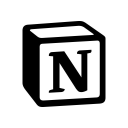I Hacked My Product in One Week and Now Make $30K/Year
Hello! Who are you and what business did you start?🔗
Hello there! My name is Erwin and I’m the founder of Tailscan for Tailwind CSS. I’ve been building this product for just over a year now, in public and as an Open Startup.
Tailscan is a browser extension for front-end developers that lets them change the styling on any website, live in the browser. The underlying framework that it uses is Tailwind CSS.
Since the last release, I’ve broadened the target market making it much easier for designers and product managers to also use Tailscan.
The recurring revenue has grown to almost $30k annually, with another $23k in one-off revenue, all with a 95% profit margin.
Open Startup dashboard (link)

Building in a very short time period may have been a part of why the initial launch went well: the value proposition was very clear because the product was simplistic.
What's your backstory and how did you come up with the idea?🔗
I started working as an IT consultant after studying Computer Science 8 years ago. Most of my work involved programming, architecture, and advising other businesses.
Two years ago I started building a product called Base Styles as a side project, hoping to make it profitable. Unfortunately, it failed to gain traction after 10 months of building. And that’s when things clicked for me. I spent way too much time without validating the idea.
So to decrease the risk and time spent I gave myself a challenge: build a very minimal first version of a new product within a week, make a demo video, and post it online to see if anyone is interested.
I ended up rebuilding a personal tool that I had hacked together in the past. It was a simple browser extension to make live visual changes easier with Tailwind CSS.
After building and posting the video on Twitter, it ended up getting 570 likes, 22000 views on the video and 82000 impressions! It felt like the complete opposite of my previous product, all of a sudden there was lots of interest with minimum effort!
To capture some of the initial interest, I decided to quickly set up an email list and add it as an extra tweet underneath the original. After that, I had to move quickly and come up with a name (didn’t have any yet), make a simple landing page, and figure out how to monetize it.
Very glad I captured the emails in the end because there were about 150 people interested that subscribed for the newsletter and it gave a solid boost to the Product Hunt launch.
In the end, after a couple of weeks, Tailscan was born!
Take us through the process of building the first version of your product.🔗
The first version of Tailscan was a very minimalistic version of what it is today. Just a Vue.js application packaged as a (chrome) browser extension. Building it in a very short period of time forced me to only build the core functionality, payment integration (Stripe), and license system, and nothing else.
I think, in retrospect, this may have been a part of why the initial launch went well: the value proposition was very clear because the product was simplistic.
As with all software, imperfections and bugs do always happen. I consciously left some things unresolved and chose to fix or polish things up in subsequent bug fixes that I rolled out the weeks after launching.

Describe the process of launching the business.🔗
After the initial interest in the tweet and demo, I started publishing the progress (mostly on Twitter) every few days and sent out a newsletter every week for a month leading up to the launch date.
What I mostly focussed on was keeping the momentum and using the newsletter as a flywheel (read more about that here) to build up a small audience.
During launch day, I launched both on Product Hunt and announced it on Twitter. In the first week, I sold 40 yearly subscriptions. And because the launch promotion went so well, I decided to extend it for Black Friday (the week after) and it resulted in another 44 yearly subscriptions.
The most valuable lesson I learned from all of this is that it’s crucial to try and get people interested as early as possible, and use that momentum as much as you can.
After the launch period, Tailscan steadily continued to grow with 30 to 40 new customers each month for the first 6 months. At the time the pricing was $39 a year. Eventually, I did realize this was too low and changed the pricing model.
I decided to add a monthly subscription ($15) and one-time payment ($249) option, as well as increasing the yearly subscription price to $79. The next 6 months after the pricing change were even better and I’ve stuck to this pricing ever since.
Since launch, what has worked to attract and retain customers?🔗
Some of the best ways to attract customers for Tailscan have been engaging in developer communities (Reddit, Twitter), writing blog articles for SEO, sponsoring newsletters in the same niche, and publishing free educational content related to Tailwind CSS.
For example, I found out that writing how-to guides worked very well, consistently ranked on the first page of Google, and has resulted in a steady stream of traffic for many months now.

In the last few months, I’ve also expanded my marketing efforts to sponsoring some newsletters that have a technical audience. Results vary per newsletter, and I definitely recommend trying it out by sponsoring just a few issues first. The results have been pretty good thus far.
Within the first year after launch, Tailscan grew to 360 subscribed customers with another 100 one-time licenses sold. This translates to $30k annually from subscriptions, with another $23k in one-off revenue.
I’ve learned that consistency over a longer period of time is key to outperforming competitors. This especially applies when you are operating in a niche.
How are you doing today and what does the future look like?🔗
Just a few weeks ago, Tailscan 2 was launched, exactly a year after the original launch. This had an unexpected side effect: I found out that subscriptions aren’t necessarily the best pricing model for Tailscan. So in the next few months, I’ll be experimenting more with pricing.
Besides that, the main focus will be on making Tailscan feature-complete with one more big release. Afterward, I’ll be shifting my focus mostly on marketing and automating as much as I can to free up more time and perhaps start working on another product!
Through starting the business, have you learned anything particularly helpful or advantageous?🔗
There have been lots of things I’ve learned in the past year. One very important thing has been exactly how important distribution is. Especially when building software, it’s overlooked too often and only when lots of time has been invested, will it become apparent that distribution will be a problem. So: check if and how you can reach your target audience beforehand.
Another challenge has been more personal and has to do with having the right mindset. I’ve had the limiting belief that Tailscan would never grow to be very lucrative. And I think I made decisions based on that early on.
In retrospect, I think Tailscan would have grown more if it wasn’t for that mindset. I learned that it’s important how you, as the founder, interact with your business and evaluate this from time to time.
And last but not least, I’ve learned that consistency over a longer period of time is key to outperform competitors. This especially applies when you are operating in a niche.
What platform/tools do you use for your business?🔗
There are a couple of exceptionally helpful tools. For analytics, I’ve used Simple Analytics since day one. They also provide a public dashboard so anyone can view my web analytics here.
Another massively helpful tool is the email marketing platform Bento. It gives me a live feed of what traffic source or what campaign resulted in what conversion and has been a great help in getting a deeper understanding of my business.
Last but not least, BrandBird has been a great help in producing marketing assets.
What have been the most influential books, podcasts, or other resources?🔗
I don’t have recommendations for good books or resources, but I do host a weekly live Twitter space called BootstrFM every Wednesday where we talk about bootstrapping startups and share things we learn along the way.
Advice for other entrepreneurs who want to get started or are just starting out?🔗
I’d like to take the opportunity and highlight something that isn’t talked about enough (I think).
Take care of your physical and mental health while on your entrepreneurial journey. You have to realize that when you’re building a business, you’re doing one of the hardest things on the planet. I see too many fellow entrepreneurs work crazy hard and burn out.
Recognize what gives and takes away energy in your daily work, and try to maintain a balance. And if things get tough, don’t be afraid to take a break sometimes. See it as an investment in future productivity.
Where can we go to learn more?🔗
If you have any questions or comments, drop a comment below!

Download the report and join our email newsletter packed with business ideas and money-making opportunities, backed by real-life case studies.

Download the report and join our email newsletter packed with business ideas and money-making opportunities, backed by real-life case studies.

Download the report and join our email newsletter packed with business ideas and money-making opportunities, backed by real-life case studies.

Download the report and join our email newsletter packed with business ideas and money-making opportunities, backed by real-life case studies.

Download the report and join our email newsletter packed with business ideas and money-making opportunities, backed by real-life case studies.

Download the report and join our email newsletter packed with business ideas and money-making opportunities, backed by real-life case studies.

Download the report and join our email newsletter packed with business ideas and money-making opportunities, backed by real-life case studies.

Download the report and join our email newsletter packed with business ideas and money-making opportunities, backed by real-life case studies.
























